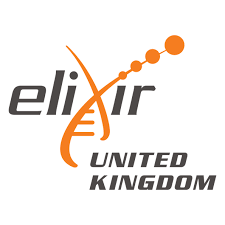GtoPdb is requesting financial support from commercial users. Please see our sustainability page for more information.
Contents:
- Gene and Protein Information
- Previous and Unofficial Names
- Database Links
- Natural/Endogenous Ligands
- Agonists
- Immunopharmacology Comments
- Immuno Cell Type Associations
- Transduction Mechanisms
- Tissue Distribution
- Expression Datasets
- Functional Assays
- Physiological Functions
- Phenotypes, Alleles and Disease Models
- References
- Contributors
- How to cite this page
Gene and Protein Information  |
||||||
| class A G protein-coupled receptor | ||||||
| Species | TM | AA | Chromosomal Location | Gene Symbol | Gene Name | Reference |
| Human | 7 | 333 | 3p21.31 | XCR1 | X-C motif chemokine receptor 1 | 6,11 |
| Mouse | 7 | 322 | 9 74.71 cM | Xcr1 | chemokine (C motif) receptor 1 | 12 |
| Rat | 7 | 322 | 8q32 | Xcr1 | X-C motif chemokine receptor 1 | |
Previous and Unofficial Names  |
|
| GPR5 [6,11] | CCXCR1 | chemokine XC receptor 1 | C motif-1/lymphotactin receptor | |
Database Links  |
|
| Specialist databases | |
| GPCRdb | xcr1_human (Hs), xcr1_mouse (Mm) |
| Other databases | |
| Alphafold | P46094 (Hs), Q9R0M1 (Mm) |
| ChEMBL Target | CHEMBL4339 (Hs) |
| Ensembl Gene | ENSG00000173578 (Hs), ENSMUSG00000060509 (Mm), ENSRNOG00000006620 (Rn) |
| Entrez Gene | 2829 (Hs), 23832 (Mm), 301086 (Rn) |
| Human Protein Atlas | ENSG00000173578 (Hs) |
| KEGG Gene | hsa:2829 (Hs), mmu:23832 (Mm), rno:301086 (Rn) |
| OMIM | 600552 (Hs) |
| Pharos | P46094 (Hs) |
| RefSeq Nucleotide | NM_005283 (Hs), NM_011798 (Mm), NM_001106871 (Rn) |
| RefSeq Protein | NP_005274 (Hs), NP_035928 (Mm), NP_001100341 (Rn) |
| UniProtKB | P46094 (Hs), Q9R0M1 (Mm) |
| Wikipedia | XCR1 (Hs) |
Natural/Endogenous Ligands  |
| XCL1 {Sp: Human} |
| XCL2 {Sp: Human} |
| XCL1 {Sp: Mouse} , XCL1 {Sp: Rat} |
| Comments: Specificity for the endogenous peptide XCL1 at the chemokine-GPCR interface has been determined [5]. |
Download all structure-activity data for this target as a CSV file 
| Agonists | |||||||||||||||||||||||||||||||||||||||||||||||||||||||||||||||||||||||||||||||||||||||||||||||||||||||||||||||||||
| Key to terms and symbols | Click column headers to sort | ||||||||||||||||||||||||||||||||||||||||||||||||||||||||||||||||||||||||||||||||||||||||||||||||||||||||||||||||||
|
|||||||||||||||||||||||||||||||||||||||||||||||||||||||||||||||||||||||||||||||||||||||||||||||||||||||||||||||||||
| Immunopharmacology Comments |
| XCR1 is one of more than 20 distinct chemokine receptors expressed in human leukocytes. Chemokines primarily act to promote leukocyte chemotaxis to sites of inflammation. XCR1 is expressed by a subset of dendritic cells [8] and along with its ligand 3647 (lymphotactin), is important for dendritic-cell-mediated cytotoxic immune responses and for the induction of self-tolerance and generation of Treg cells in the thymus. |
| Cell Type Associations | ||||||||
|
Primary Transduction Mechanisms 
|
|
| Transducer | Effector/Response |
| Gi/Go family | Calcium channel |
| References: 11 | |
Tissue Distribution 
|
||||||||
|
||||||||
|
||||||||
|
||||||||
|
||||||||
|
||||||||
|
Expression Datasets  |
|
|
Functional Assays 
|
||||||||||
|
||||||||||
|
||||||||||
|
||||||||||
|
||||||||||
|
Physiological Functions 
|
||||||||
|
||||||||
|
Phenotypes, Alleles and Disease Models 
|
Mouse data from MGI | ||||||||||||||||||
|
|||||||||||||||||||
References
1. Bachem A, Güttler S, Hartung E, Ebstein F, Schaefer M, Tannert A, Salama A, Movassaghi K, Opitz C, Mages HW et al.. (2010) Superior antigen cross-presentation and XCR1 expression define human CD11c+CD141+ cells as homologues of mouse CD8+ dendritic cells. J Exp Med, 207 (6): 1273-81. [PMID:20479115]
2. Cairns CM, Gordon JR, Li F, Baca-Estrada ME, Moyana T, Xiang J. (2001) Lymphotactin expression by engineered myeloma cells drives tumor regression: mediation by CD4+ and CD8+ T cells and neutrophils expressing XCR1 receptor. J Immunol, 167 (1): 57-65. [PMID:11418632]
3. Crozat K, Guiton R, Contreras V, Feuillet V, Dutertre CA, Ventre E, Vu Manh TP, Baranek T, Storset AK, Marvel J et al.. (2010) The XC chemokine receptor 1 is a conserved selective marker of mammalian cells homologous to mouse CD8alpha+ dendritic cells. J Exp Med, 207 (6): 1283-92. [PMID:20479118]
4. Fox JC, Nakayama T, Tyler RC, Sander TL, Yoshie O, Volkman BF. (2015) Structural and agonist properties of XCL2, the other member of the C-chemokine subfamily. Cytokine, 71 (2): 302-11. [PMID:25497737]
5. Fox JC, Thomas MA, Dishman AF, Larsen O, Nakayama T, Yoshie O, Rosenkilde MM, Volkman BF. (2019) Structure-function guided modeling of chemokine-GPCR specificity for the chemokine XCL1 and its receptor XCR1. Sci Signal, 12 (597). [PMID:31481523]
6. Heiber M, Docherty JM, Shah G, Nguyen T, Cheng R, Heng HH, Marchese A, Tsui LC, Shi X, George SR et al.. (1995) Isolation of three novel human genes encoding G protein-coupled receptors. DNA Cell Biol, 14 (1): 25-35. [PMID:7832990]
7. Huang H, Li F, Cairns CM, Gordon JR, Xiang J. (2001) Neutrophils and B cells express XCR1 receptor and chemotactically respond to lymphotactin. Biochem Biophys Res Commun, 281 (2): 378-82. [PMID:11181058]
8. Lei Y, Takahama Y. (2012) XCL1 and XCR1 in the immune system. Microbes Infect, 14 (3): 262-7. [PMID:22100876]
9. Shan L, Qiao X, Oldham E, Catron D, Kaminski H, Lundell D, Zlotnik A, Gustafson E, Hedrick JA. (2000) Identification of viral macrophage inflammatory protein (vMIP)-II as a ligand for GPR5/XCR1. Biochem Biophys Res Commun, 268: 938-941. [PMID:10679309]
10. Stemmler S, Arinir U, Klein W, Rohde G, Hoffjan S, Wirkus N, Reinitz-Rademacher K, Bufe A, Schultze-Werninghaus G, Epplen JT. (2005) Association of interleukin-8 receptor alpha polymorphisms with chronic obstructive pulmonary disease and asthma. Genes Immun, 6: 225-230. [PMID:15772681]
11. Yoshida T, Imai T, Kakizaki M, Nishimura M, Takagi S, Yoshie O. (1998) Identification of single C motif-1/lymphotactin receptor XCR1. J Biol Chem, 273 (26): 16551-4. [PMID:9632725]
12. Yoshida T, Izawa D, Nakayama T, Nakahara K, Kakizaki M, Imai T, Suzuki R, Miyasaka M, Yoshie O. (1999) Molecular cloning of mXCR1, the murine SCM-1/lymphotactin receptor. FEBS Lett, 458 (1): 37-40. [PMID:10518929]











